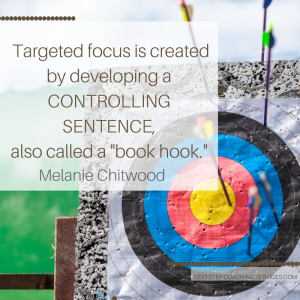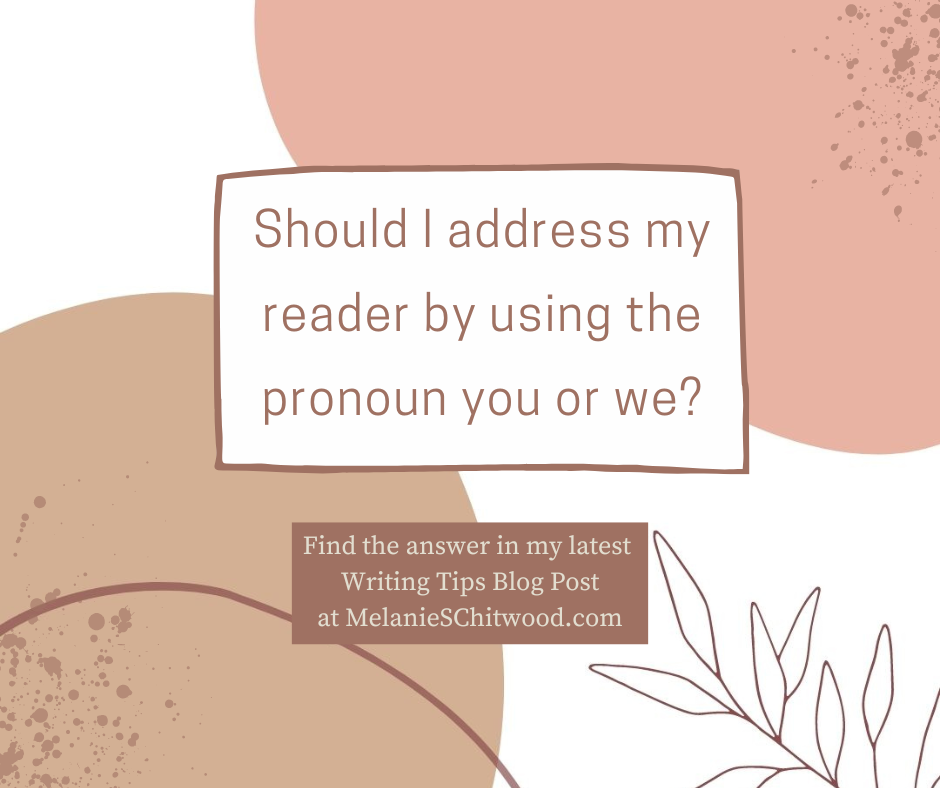Writing Qualities Our Readers Will Love: Targeted Focus
What are writing qualities our readers will love? Recently I stayed up reading past my usual early bedtime because of the book’s irresistible concepts and writing style. I even got up to find a pen to underline and star concepts.
What made this book, Undone by Michelle Cushatt, so enticing? The story was compelling and the writing style was stellar. How can we do the same thing with our writing?
Today we begin a four-part series about writing in a way our readers will love. Today’s blog post will cover the first quality essential to good writing: targeted focus.
Targeted focus is created by developing a controlling sentence, what some call your “book hook.”
A great way to tell if you have delivered targeted focus is to imagine someone asking you, “What is your book (devotional, blog, etc.) about?” Can you answer in one sentence?
You probably won’t be able to answer that completely at first. But as your writing process continues, you’ll be able to craft the focus of your book in one sentence, the controlling sentence.
Let’s look at an example using my marriage book. When asked what my book is about I might answer:
My book (What a Husband Needs from His Wife) is about how God’s principles can be used to practically navigate the ups and downs of marriage. The principles help you establish habits that will keep your marriage strong over the years. The book will give you practical ideas for meeting your husband’s needs while following God’s plan for marriage.
This isn’t one sentence, is it? Notice that you’ll probably need to start with a paragraph or two, and then keep revising until you land on one sentence. For example, the following became my controlling sentence:
Becoming the wife your husband needs means being the wife God wants you to be.
From this sentence, I then organized my chapters based on scriptural principles of marriage.
Keep in mind the following qualities about your controlling sentence:
The controlling sentence can be pictured as a target
We can picture the controlling sentence as a target with a bullseye and arrows aimed at it.
The bullseye represents your controlling sentence, the focus of your writing. The arrows that you aim at the bullseye represent all your other chapters, titles, subtitles, paragraphs, and sentences.
The controlling sentence keeps you, the writer, focused
Write your controlling sentence on a sticky note and paste it on your computer or other places you write. Let that be your bullseye throughout the writing process.
The controlling sentence can appear in your manuscript
Yes, you can (and I think should!) include your controlling sentence in your book at the beginning. In a shorter work, such as blog or article, the controlling sentence can be in the first paragraph or two.
You can repeat it other places in your manuscript exactly the same way, or tweak it some. Don’t beat your reader over the head by repeating it too much – just enough to remind her of your main point.
The controlling sentence recognizes the reader’s need
Let’s go back to my marriage book example. Why is a woman going to read a marriage book? She wants a good marriage! Make sure your controlling sentence recognizes her need. After much research I knew my reader’s need was to see inside her husband’s mind and heart. How could she respond to her husband in a way that pleased God?
Have you thought about your reader’s need and how your writing will address that need?
The controlling sentence helps you deliver what you promise
The title of your work (along with chapter titles and subtitles) makes a promise to your reader. It tells her what your book is about. The controlling sentence reminds you as a writer to be true to what you’ve promised.
The controlling sentence helps you with marketing
Your controlling sentence can be used for your back cover copy and future social media posts. So by creating this sentence early, you’ve already made steps toward developing future marketing.
Make your readers love your writing by creating targeted focus. Can you take some time today to review one of your writing pieces, evaluating it for clear focus? Picture the target. Make sure your writing includes a controlling sentence, represented by the bullseye.
~Melanie
I would love to help you in your writing process. As a writing coach and editor, I work on a variety of manuscripts – books, Bible studies, and devotionals. My services cater to your needs. For example, I can completely correct a manuscript, looking at content, organization, flow, grammar, and punctuation. Or I can give you feedback without correcting anything. Or some stage in between these. Fill out the request for free conference call (click here) and we can talk about how I can help you in your writing process.
This page contains affiliate links. Your clicks and purchases help defray Next Step’s website costs at no extra charge to you. Thank you!








A target. I like that, Melanie! Great guidance for developing a hook and for keeping my words focused on the main idea.
Thanks for the affirmation, Charla! I, too, like word pictures – they stay with me.